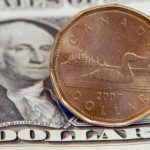 Copper rose to a new session high in late European trading, extending its first daily advance in four, after Standard & Poors affirmed Chinas credit sovereign rating at AA- with stable outlook, boosting the industrial metals demand prospects in its biggest consumer. Investors eyed a private report due to be released on Sunday that might show manufacturing growth in the second largest economy slightly slowed in November, but the sector expanded for a fourteenth consecutive month. Upbeat data from Japan, Canada and Europe and a weaker dollar continued to support the market.
Copper rose to a new session high in late European trading, extending its first daily advance in four, after Standard & Poors affirmed Chinas credit sovereign rating at AA- with stable outlook, boosting the industrial metals demand prospects in its biggest consumer. Investors eyed a private report due to be released on Sunday that might show manufacturing growth in the second largest economy slightly slowed in November, but the sector expanded for a fourteenth consecutive month. Upbeat data from Japan, Canada and Europe and a weaker dollar continued to support the market.
On the Comex division of the New York Mercantile Exchange, copper futures for settlement in March traded at $3.220 per pound at 13:51 GMT, up 0.93% on the day. Prices surged to a session high of $3.223 in late European trading hours, while days low stood at $3.196 a pound. The industrial metal was unchanged on Thursday after falling for two days and rose back to positive weekly territory following Fridays advance. The contract is down 2.4% on monthly basis.
Copper drew support on Friday after Standard and Poors confirmed Chinas AA-/A-1+ sovereign credit rating with stable outlook and affirmed its Greater China regional scale rating at “cnAAA/cnA-1+”. China is the worlds top consumer of the metal and accounts for around 40% of global demand.
The agency said that the Asian countrys growth prospects, modest government indebtedness and strong net external asset position are key supportive factors for Beijings creditworthiness. These strengths offset some downsides such as reliance on direct administrative tools to manage the economy and restricted information flows.
“The stable outlook on the global scale long-term rating reflects our view that economic and political developments in the next two to three years are likely to support the rating,” Standard and Poors said.
The red metal also drew support ahead of the release of a government manufacturing report on Sunday. Chinas PMI is expected to post at 51.1 in November, slightly below Octobers 51.4 but remaining firmly in the expansion zone for a 14th consecutive month.
A preliminary private report released on November 21 showed China’s manufacturing sector expanded in November, despite trailing projections and falling to a two-month low. The HSBC Flash China Manufacturing PMI fell to 50.4, down from October’s final reading of 50.9 and below analysts’ expectations to post at 50.8.
Japan, Canada, Europe data
Also fanning positive sentiment for the industrial metals demand prospects, Japans Manufacturing PMI, prepared by Nomura/JMMA and Markit Economics, rose for a fourth consecutive month and reached 55.1 in November, the highest in more than four years, after jumping to 54.2 in October. Japan’s manufacturing activity expanded (remained above the neutral level of 50) for a ninth consecutive month.
Japans housing sector marked an improvement and inflation accelerated in line with expectations, offsetting a smaller-than-expected growth in industrial activity and unemployment remaining unchanged.
Better-than-expected housing data from Britain also gave prices a lift. The Nationwide House Price Index (HPI) met expectations and jumped by 0.6% in October after posting at 1.0% in September. Year-on-year, prices of homes with mortgages backed by Nationwide rose by 6.5%, outperforming both projections and the preceding month’s gains of 6.2% and 5.8% respectively.
In the Euro zone, Germanys retail sales disappointed by contracting by 0.8% in October, confounding expectations for a 0.5% advance following September’s upward revised 0.2% decline. On an annual basis, retail sales in the leading EU nation fell by 0.2% after advancing by 0.2% a month earlier, defying projections for a 1.5% gain.
A separate report showed inflation picked up in the Euro zone and exceeded expectations, while the unemployment rate declined. Year-on-year, the single currency bloc’s Flash Harmonized Index of Consumer Prices advanced by 0.9% in November after creeping at 0.7% in the previous two months. Analysts expected prices to have risen by 0.8%.
Core consumer prices, which exclude the volatile costs for food, energy, alcohol, and tobacco, also surprised positively and rose by an annualized 1.0%, beating projections for a 0.9% advance and the preceding month’s 0.8% gain.
Another source for positive sentiment was a retreat in the unemployment rate from last month’s record high reading. Unemployment fell to 12.1% in October, beating expectations to remain unchanged at 12.2%.
A separate report showed Canadas economy grew by 0.3% in September, beating projections for a 0.2% advance. On an annualized quarterly basis, economic growth accelerated to 2.7% in the third quarter, the most in two years, following a downward revised 1.6% expansion in the three months through June. Quarter-on-quarter, Canadas GDP rose by 0.7% after gaining 0.4% in the previous three months.
A weaker U.S. dollar also eased pressure on the industrial metal. The U.S. dollar index for settlement in December traded at 80.57 at 13:46 GMT, down 0.08% on the day. The U.S. currency gauge fell by 0.1% on Thursday and extended its weekly decline on Friday. A weaker greenback makes commodities priced in it cheaper for foreign currency holders and boosts their appeal as an alternative investment.
Gains however remained limited after a recent series of overall upbeat U.S. data reinforced the case for an earlier-than-expected Fed stimulus tapering. The Federal Reserve revealed last week that it might be trimming the record-high stimulus “in the coming months”, if the economic recovery continues to move in the targeted direction.





